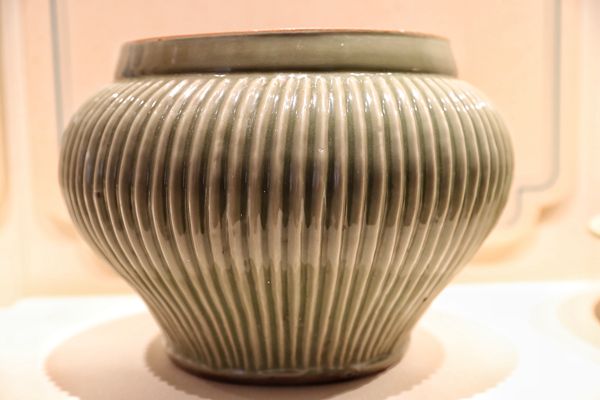 |
|
A 14th-century Longquan celadon jar, on loan from the National Museum of Iran.[Photo by Jiang Dong/China Daily] |
During excavations of ruins at the port of Julfar in Ras al-Khaimah, the United Arabic Emirates, countless pieces of Longquan celadon were found scattered all over the site, resting there for more than half a millennium as further evidence of the region's vast trading history.
Using the Persian Gulf as a transfer station, Longquan celadon was traded all over Africa. Of the 1,257 samples of Chinese porcelain pieces discovered at the Ruins of Gedi in Kenya, more than half were from Longquan, and most of the Ming Dynasty examples were from the same origin.
Output at the Longquan Kilns began to wane by the middle of the Ming Dynasty due to the rise of Jingdezhen in Jiangxi province, the site for the new imperial kilns.
Although Longquan had fallen out of favor, it continued to thrive in folk art. The jade figurines on display, loaned by the British Museum, show how jade took on a new lease of life when applied to creative forms in Longquan.
And the global importance of Longquan was given a more modern context after the ancient production methods used to create celadon there were inscribed on the UNESCO Intangible Cultural Heritage list in 2009.
"As a worldwide cultural symbol, Longquan celadon was a witness to the prosperity of the Maritime Silk Road," says Wang Xudong, director of the Palace Museum. "It can provide an important historical reference for the Belt and Road Initiative today, particularly in terms of how it helped to improve people-to-people connectivity and overcome cultural barriers."